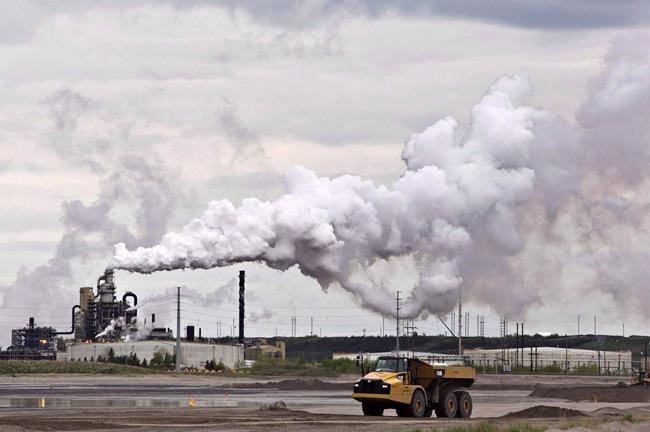CALGARY — Alberta's new climate plan drew criticism this week for its lack of interim emissions reduction targets, but proponents of carbon capture and storage technology say it's important to be realistic about how quickly major projects can be deployed.
"Whether we like it or not, it's going to take time," said James Millar, president and CEO of the International CCS (carbon capture and storage) Knowledge Centre, a non-profit organization based in Regina.
"It comes down to getting these projects built. And in an optimal world, that will take six or seven years."
Most climate models suggest the large-scale deployment of carbon capture technology — which is used to trap harmful greenhouse gas emissions from industrial processes and store them safely underground — will be necessary if Canada is to have a chance of meeting the net-zero-by-2050 target the federal government has committed to.
There are currently more than 50 proposed carbon capture and storage projects in various stages of development by industry across the country. The vast majority of those are proposed to be located in Alberta, home to Canada's oil and gas sector and the country's heaviest-emitting province.
But while some of those projects could be getting close to a final investment decision, companies have said they need more policy and regulatory certainty before they can pull the trigger on what is expected to be billions of dollars in capital investment.
They're racing against the clock. The federal government's net-zero plan includes an interim target of reducing Canada's emissions by at least 40 to 45 per cent below 2005 levels by 2030 — a goal and time frame that the oil and gas industry has long suggested is unrealistic.
“The question is, how fast do you want us to go?" said MEG Energy Corp. CEO Derek Evans at an oil and gas industry conference in Toronto earlier this month.
MEG is part of the Pathways Alliance, a consortium of oilsands companies that has committed to spending $16.5 billion on a massive carbon capture and storage network to be built in northern Alberta.
Evans said Pathways intends to apply for regulatory approval for its carbon pipeline as early as this fall, but 2030 is fast approaching and building a 400 kilometre-long piece of infrastructure is a heavy lift.
"Do you want me to jam that ($16.5 billion investment) through that knothole in that time frame? Or if we’re making progress on that, is that the key?" Evans asked.
Alberta's climate plan, in contrast to the federal vision, doesn't contain any interim targets. Instead, it asks for proposals for consultants to go through the provincial economy sector by sector and analyze what's achievable.
Millar said he believes industry wants to gets shovels in the ground sooner rather than later — not just to meet the federal 2030 target, but also because the federal price on carbon is set to rise by $170 per tonne by 2030.
But he pointed out that Canada doesn't have a history of building large infrastructure projects quickly, which may mean that making progress towards a 2050 goal is more important than a 2030 target. The industry is still waiting for more policy certainty from the federal government around future carbon pricing, and there are also concerns around how long the regulatory and permitting process could take for some of these projects.
"We'd all like to move a lot quicker, but we just have to look at history, at the length of time it takes to get things done," Millar said.
"So I think it's 2050 for those reasons. This is going to take time."
Jan Gorski, oil and gas director for the Pembina Institute — a clean energy think-tank — said interim targets on the road to 2050 are an important accountability measure. He said the lack of a near-term target without a clear emissions reduction signal could lead to decisions that lock in higher emissions, such as building natural-gas fired power plants to produce electricity instead of investing in renewable energy.
However, Gorski added that targets on their own mean nothing, which is why the federal government's pledge to introduce a legislated cap on emissions from the oil and gas sector is so important.
"What we need is both a target and policy," Gorski said. "The target on its own is only one part of the equation."
This report by The Canadian Press was first published April 20, 2023.
Amanda Stephenson, The Canadian Press




